
|
|
||||||||||||||||||||
|
|
 |
|
||||||||||||||||||
|
|
||||||||||||||||||||
|
|
|
|
|
|
|
|
|
|
||||||||||||
|
|
|
|
|
|
|
|
|
|||||||||||||
|
|
||||||||||||||||||||
|
#1
|
||||
|
||||
|
The Official HDC Top 100 Iconic Personalities of Horror
Hello folks of HDC and all the horror fans worldwide,
After a long wait and relentless deliberation by the 7-Judge panel, we have finally compiled the Top 100 Iconic Personalities who have influenced the Horror genre in many ways and have made it into the popular one which it is today, among all of you. So sit back, and enjoy a thrilling visit to each of the personas who with their influence AND their iconic status have made our most lovable genre a highly-respected one. And please don't post any replies to this thread until I am done. Thank you in advance. :)
__________________
"If you gaze for long into an abyss, the abyss gazes also into you." - Friedrich Nietzsche |
|
#2
|
||||
|
||||
|
ADRIENNE BARBEAU
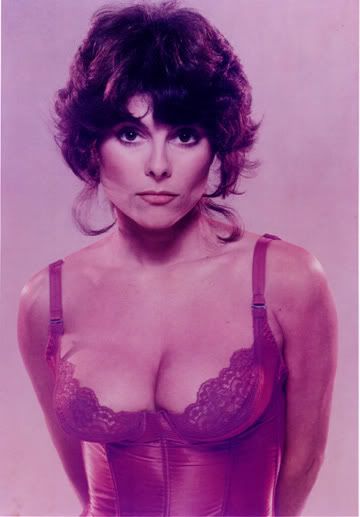 SIR ALFRED HITCHCOCK 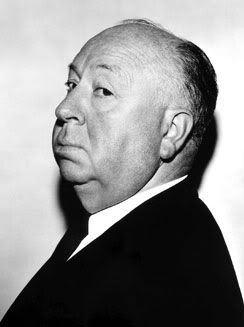 "Sir Alfred Joseph Hitchcock (August 13, 1899 – April 29, 1980) What do you say about this man, that hasn’t been said a thousand times before. The “Master of Suspense”, as he will always be known, created the templates for the crime and thriller genres. He made the first successful entry into the “Slasher” genre. Perfected the espionage genre. Devoted husband and father. A 52 film career (with more films on the burner before his death). A career that spanned silents, the fortification of British cinema and the golden age of Hollywood. A director of diverse interests - making suspense, comedy, satire, horror, and even documentary films. I prefer to think of him as the frightened little boy, incarcerated by his father (as a way of teaching him a lesson for some minor infraction). Fear seemed to follow him his whole life, most notably, the fear of authority. And of women. But he seemed to fight that fear with a quiet tenacity, preferring to appease his aggressions and demons on the silver screen. Perhaps, that is what gave him the ability to paint his imagery in such broad strokes. Of course, his preferred brush was the knife, the gun….and always red paint. His experiences with women really began (he never spoke much of his mother) with meeting his future wife Alma Reville (who later became his film editor, and is often referred to by the motto “The Hitchcock touch had four hands”). Too timid, it took years before he could even speak to her. The charisma he lacked with women, in real life, he more than made up for in his films, though. Some of the richest female roles ever seen in cinema performed by some of the most storied actresses ever. Actresses have never had it so good since. Psycho, North by Northwest, The Birds, Rear Window, Strangers on a Train, Shadow of a Doubt, Vertigo, The 39 Steps, Suspicion, Notorious, Spellbound, Rope, Dial “M” for Murder, The Man Who Knew Too Much, Frenzy ……sometimes it seemed the man never made a bad movie. Though never fully respected in his own time (not 1 Oscar for directing), he is now a God of filmdom and directors constantly try to steal from him. But they’ll never get it right. There is and always will be only one - and that is Sir Alfred Hitchcock. " - Festered ANGUS SCRIMM 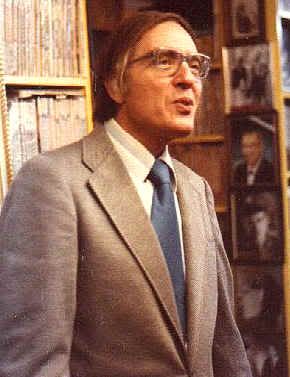 ANTHONY PERKINS 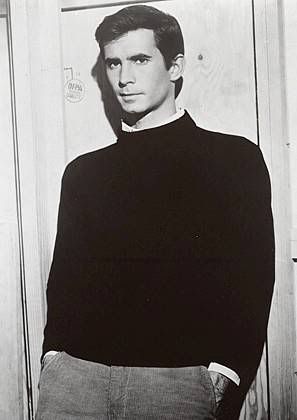 ""I'm Norman Bates." Sometimes even the greatest of roles becomes a curse for the actor portraying it, and later they start accepting their identity with that celluloid character that they gave life to, and became a stereotype of, in their cinematic careers. Anthony Perkins is a glaring example of this group. He was an overnight star, created by the master of suspense Sir Alfred Hitchcock's 1960's sensational classic "Psycho" through the role of Norman Bates, the shy & soft spoken psychopath, but seemingly a harmless boy next door, Norman Bates - one of the most unforgettable characters in the history of cinema. Anthony Perkins began his career as Hollywood's next teen idol in the early 50's but his gripping performance as the mentally disturbed baseball star Jim Piersall in "Fear Strikes Out" (1957) probably made him a suitable choice for what would become his signature role, the mother-fixated Norman Bates. With his nervous tickings and an amazing portrayal of charm and threat, Perkins inhabited more than the soul of his character. He remarkably presented the deranged, loyal Norman Bates who ran the Bates Motel, practiced taxidermy and lived with his 'mother' in the picturesque Victorian house on the hill. He sinks deep into Norman's soul, and brings out the hidden terrors and malice in an amazingly and frighteningly real portrayal. An incredible subtle performance, that has had universal appeal in cinema for all time for the movie lovers around the globe. Perkins went on to appear in a number of other interesting works, including Orson Welles' adaptation of Kafka's "The Trial" (1962), but could never quite shake the "Psycho" mantle, Norman Bates always lurking behind him in the public's eye. He was always acknowledged with the knife wielding, cross-dressing, and highly strung Norman in the mind of his audiences. So after several attempts in European films to escape Norman Bates, he was back into Psycho territory in Pretty Poison for a while. This 1968 underrated film has him playing a disturbed young man recently released from an institution where he was sent to, after killing his aunt. If his performance in the granddaddy of slashers was his only contribution to the cinema, Anthony Perkins could still rightfully claim a respected place in the Hollywood celluloid history. Hitchcock clearly captured that pulsating dark and edgy element in Perkins' on-screen persona and he fully exploited it in Psycho. His role in Psycho has become a part of American Iconography…one that no one, even himself, was able to compete with as an actor, and one that he returned to again - near about a quarter of a century later, in the first of three progressively campy sequels. With the direction of Richard Franklin and supported from a clever screenplay by Tom Holland, Psycho II (1983) is still treated as one of the best sequels by ardent horror fans. But its success also seemed to strengthen the belief that Perkins and Norman Bates were one and the same - inseparable. So Universal called Perkins for Psycho III in 1986 again which also marked his directorial debut. Other actors could portray other legendary characters like James Bond, Dracula or Sherlock Holmes and still get the viewers' acceptance in other roles, but Norman Bates was a totally different and impossible image to shake off from, as Vince Vaughn surely experienced while playing the same role in the terrible 1998 remake, which failed miserably to shake off the Anthony Perkins image of Norman Bates in the viewers' minds. Before the curtain came down on Anthony Perkins's career, he delivered a disturbingly effective (or effectively disturbing) performance in 1989's Edge of Sanity which was a reintroduction of Robert Louis Stevenson's classic tale, Dr. Jekyll and Mr. Hyde. But as Norman Bates and Perkins were synonymous in his fans' minds, the film did not enjoy much critical success. This legendary actor once said in an interview "Norman appears on request, I would even say on demand. I can dial my own personal 800 number and Norman will reply back." " - Roshiq ARCH OBOLER 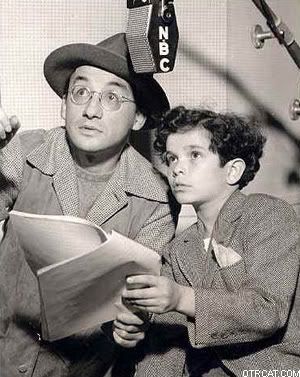 "In the days before television, the home entertainment device of choice was the radio. It kept you connected to the world and it provided countless hours of entertainment free of charge. Live broadcasts of band concerts were very popular, as were variety programs featuring musical acts, comedians and even dramatic actors. Every genre of program seen on television today (with the exception of so-called "reality" shows) had its start on radio - police dramas, sitcoms, soap operas (in fact the term "soap opera" was coined to describe these domestic dramas on radio because they were most often sponsored by soap companies), and others. Some of the most popular shows were the mystery, suspense and horror programs. Old Time Radio has come to be known as "theatre of the imagination," and that's a very apt designation as the absence of any visual component forced the listener to fill the pictures in with his or her own imagination. A clever writer and director of radio shows could use sound effects and vivid descriptions combined with exceptional vocal talent to produced frightening images in the mind of the listener that could not be matched by any other medium. Arch Oboler was one such clever writer, working first on the horror program "Lights Out," which first aired in 1933. When Oboler took over the writing and hosting chores in 1936 he initiated the spine tingling opening intoning the words "IT... IS... LATER... THAN... YOU... THINK..." one at a time, scaring the bejeebers out of listeners right from the start. Many of Oboler's scripts featured gruesome sound effects such as bones breaking, hatchets being embedded into skulls and one memorable script, "The Dark" which featured the sound of people being turned inside out. Lights Out was a hugely popular show and Oboler was the reason why. His scripts often tackled social issues in addition to scaring the daylights out of listeners. One of his scripts, "The Chicken Heart" is considered by many to be the quintessential example of the theatre of the imagination as it details the growth of a mutated chicken heart to fantastic proportions and eventually engulfing the entire world. Arch Oboler scared people on a weekly basis for decades, and for his continual and tireless efforts, is a well-respected icon of horror today." - NeverEnding
__________________
"If you gaze for long into an abyss, the abyss gazes also into you." - Friedrich Nietzsche Last edited by _____V_____; 10-19-2008 at 11:24 AM. |
|
#3
|
||||
|
||||
|
BARBARA STEELE
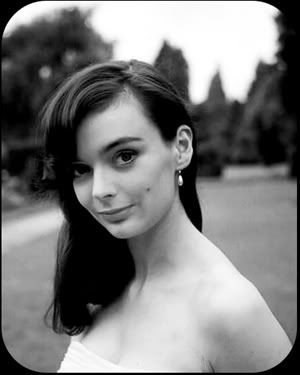 BELA LUGOSI 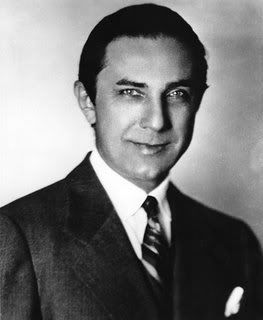 BOB CLARK 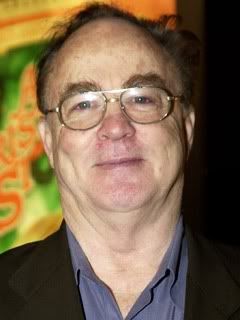 BORIS KARLOFF 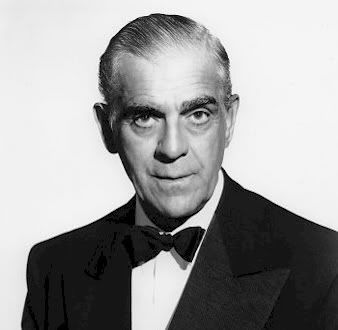 "Boris Karloff was a bit player at Universal Studios when he agreed to play a role that had been turned down by the reigning king of horror movies, Bela Lugosi. It was a non-speaking role and, the legend goes, Lugosi felt it was beneath his station to take. Karloff was happy to have any work, even for a role that required him to spend hours in the make-up chair every morning and wear heavy elevator shoes that weighed 13 pounds each. Taking the role turned out to be a decision that changed his life forever. It was The Monster in the 1931 film, Frankenstein. Even with his face heavily made up Karloff was still able to infuse his portrayal of The Monster with equal amounts of savagery, confusion and pathos. The film is a quality production through and through, but Karloff's portrayal is the reason people still watch and revere the film today. Though the censors were not kind to the film, excising some of the most important scenes and lines from the film, the public loved it. Karloff's monster was the most terrifying thing they had ever seen. Karloff was never out of work for the rest of his life. He was instantly dubbed The King of Horror, and he remains such even today. He appeared in over 150 films, countless television shows, many radio dramas, stage plays, and even released several record albums, nearly all of which here horrific or mysterious in nature. Even though he was in reality a kindly, soft-spoken British gentleman he never once complained about being a "horror actor." He was making a living doing what he loved - acting - and he was very grateful to his fans for keeping him employed. Following Frankenstein he appeared in many of the greatest horror films of the 30s and 40s, including the sequel to Frankenstein, The Bride of Frankenstein, which many, myself included, consider the best horror film ever made. He often appeared alongside his friendly rival, Lugosi, in films such as The Black Cat and The Body Snatcher. In the 60s he appeared in several films directed by Roger Corman alongside other horror stalwarts Vincent Price and Peter Lorre. No matter the role he played, mad scientist, monster, thug, lackey, police detective, kindly old grandfather, he always embued his roles with a humanity and understanding that would not have been found in the hands of a lesser talent. His kindly British accent, with it's slight lisp was instantly recognisable. Some of his greatest triumphs were on Broadway, even though he was reluctant at first to venture on The Great White Way, fearing failure before a live audience. He needn't have worried. The audiences loved him in person and he was quite proud of his stage roles as Capt. Hook in Peter Pan, Pierre Cauchon in The Lark, and Jonathan Brewster the sadistic killer in the original production of Arsenic & Old Lace, a character who has had his looks surgically altared so he looks "just like Boris Karloff." Another role that brought him great joy was that of Narrator and Grinch in the original telivision production of Dr. Seuss's "How the Grinch Stole Christmas." Though there were some low budget horror films released after his death that featured footage Karloff shot before he died, these messes are ignored by his fans for the travesties they are. He was in failing health, having to work from a wheel-chair, with an oxygen tank at hand, and he gave his all, just as he did in every job he did. His REAL last film was a fitting tribute and ending point to his career. It was director Peter Bagdonovich's first feature film, and he got the chance to make it because producer Roger Corman had Karloff on contract for three days, and Corman never let anything go to waste. Corman told Bagdonovich he could make any film he wanted as long as he stayed in budget, used Karloff for three days and also used some footage of another Corman production starring Karloff, The Terror. What Bagdonovich fashioned has become a minor classic. Karloff plays an aging horror film star named Byron Orlok who laments what has become of Hollywood in the modern age. Bagdonovich himself plays Orlok's director in the film. Contrasted with the world of horror in movies is a plot about a sniper who kills his family and then is killing random victims throughout the town. The two plots converge at a drive-in theatre Orlok is to make a personal appearance and the sniper is hiding in. Contrasted with images of Karloff on the drive-in screen and Orlok the actor in person faced with a real killer he must defeat is a cinematic tour-de-force, but it's not the only amazing scene in the film. Earlier, Orlok and his director share some quiet moments in a hotel room and the actor remenices about his past. Karloff was afraid he might not be up to the lengthy monologue the script called for so Bagdonovich just sat him down with a few belts of scotch and they started filming. He did the scene in one take. The image of Karloff as Frankenstein's Monster is THE iconic image of horror films, and the humanity he managed to give that character is the reason why. He was a master of his art, and he's still scaring us even today." - NeverEnding BRAM STOKER 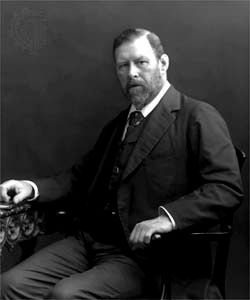
__________________
"If you gaze for long into an abyss, the abyss gazes also into you." - Friedrich Nietzsche Last edited by _____V_____; 05-15-2009 at 06:33 AM. |
|
#4
|
||||
|
||||
|
BRUCE CAMPBELL
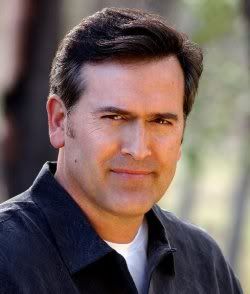 CARL LAEMMLE JR. 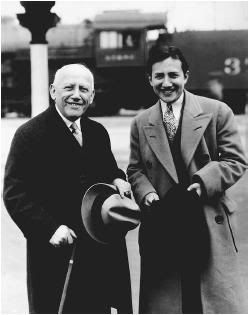 CARROLL BORLAND 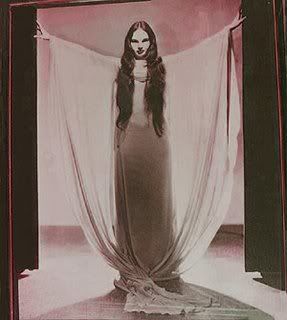 CASSANDRA PETERSON 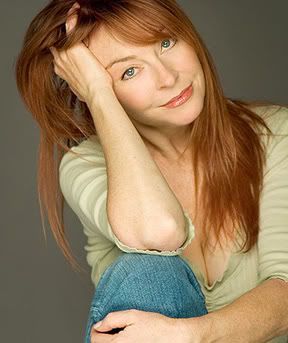 CHRISTOPHER LEE 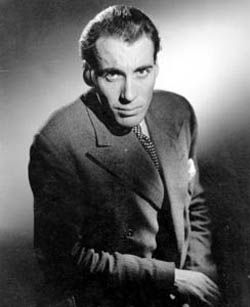
__________________
"If you gaze for long into an abyss, the abyss gazes also into you." - Friedrich Nietzsche |
|
#5
|
||||
|
||||
|
CLAUDE RAINS
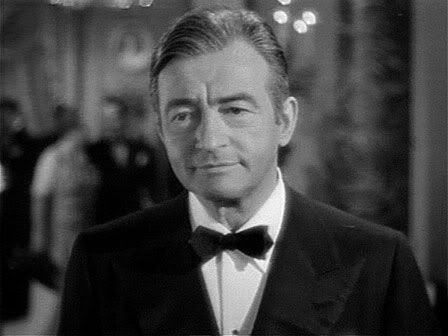 CLIVE BARKER 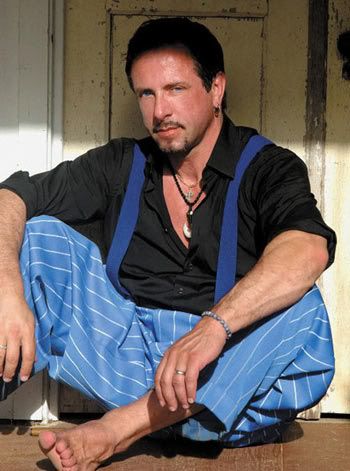 CONRAD VEIDT 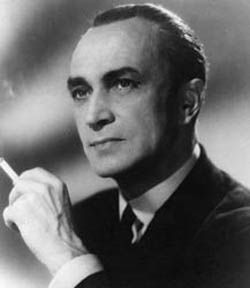 DAN CURTIS 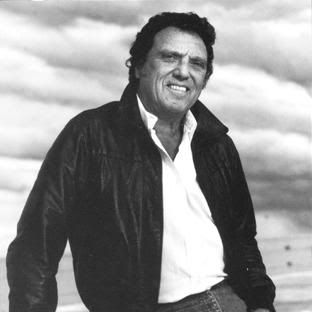 DANTE ALIGHIERI 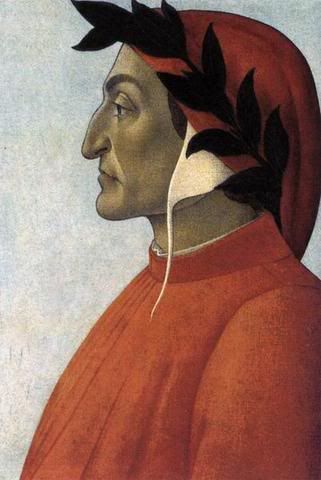 "Prior to the early 14th century, there was no detailed written accounts of the Christian Hell. It was Dante, who during that time wrote the poem, The Divine Comedy (known simply as Commedia then). Broken into the sections: Inferno (Hell), Purgatorio (Purgatory), and Paradisio (Heaven), it gave a detailed account of Dante's journery through these three parts of the afterlife. The most popular section of course, was the Inferno. Led by the poet, Virgil, Dante traveled through the Nine Circles of Hell. In Hell, sinners would be punished with their own sins for all eternity, and each Circle would have more grievous and wicked sins than the last, depicted in all their gory detail. The Ninth Circle was the farthest from God where Satan was frozen (Hellfire is only in the lesser circles), along with the three greatest traitors: Marcus Brutus, Cassius, and of course, Judas. Dante's Inferno has been an astounding piece of literature that has influenced not just horror and art, but everyday people for countless centuries. Dante is truly iconic when it comes to horror, in every sense of the word." - Papillon Noir
__________________
"If you gaze for long into an abyss, the abyss gazes also into you." - Friedrich Nietzsche Last edited by _____V_____; 09-17-2008 at 09:44 PM. |
|
#6
|
||||
|
||||
|
DARIO ARGENTO
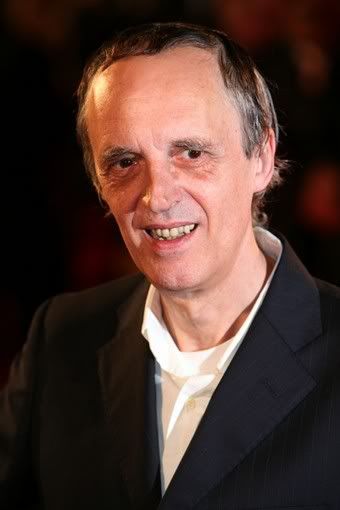 DAVID CRONENBERG 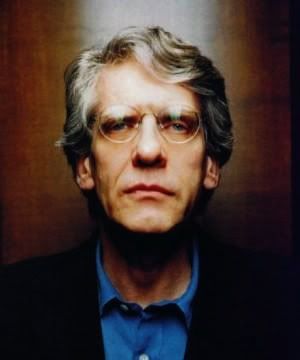 DAVID LYNCH 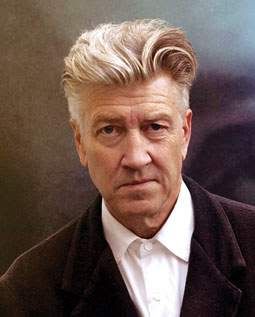 DON COSCARELLI  DONALD PLEASENCE 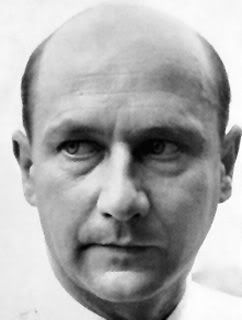 "Pasty-faced, pudgy, balding and timid looking, Donald Pleasence (1919-95) had all the earmarks of a secondary character actor doomed to play accountants and store clerks throughout his career. He just didn't seem the type to stand out from the rather well-populated pack. But thanks to a rather showy role in The Flesh and the Fiends (1960), a nice little creepy film about graverobbers Burke and Hare, Pleasence inched his way onto the world stage. Beginning his career in theatre in 1939, even he might have thought it all a lark. With WW2 looming in the horizon, he joined the RAF and was shot down, ending up, prophetically, in a POW camp (his portrayal of the master forger in The Great Escape being no coincidence). To younger audiences, he will always be remembered as kindly Dr. Loomis in the Halloween series, but he was one of the premier character actors of the 60s and 70s. My first sight of him was as the first Blofeld (in physical presence) in the James Bond film You Only Live Twice (the character is parodied in the Austin Powers films). He also had showy roles in Dr. Crippen, Circus of Horrors, Fantastic Voyage, Cul-De-Sac, Night of the Generals, Soldier Blue, THX 1138, Tales that Witness Madness, The Black Windmill, The Eagle Has Landed, Dracula (1979), Witness for the Prosecution, Prince of Darkness, Escape from New York and my personal favorite Telefon, playing a psychotic ex KGB agent setting off explosive sleepers thruout the US ("Miles to go before we sleep"). A worthy successor to Peter Lorre (whom he most reminds me of), Pleasence was always in demand, even to the end. Whether it was a good or bad film, he always brought something extra to the show, and elevated the material. No one can ask any more from a character actor." - Festered
__________________
"If you gaze for long into an abyss, the abyss gazes also into you." - Friedrich Nietzsche Last edited by _____V_____; 10-11-2008 at 09:52 PM. |
|
#7
|
||||
|
||||
|
DWIGHT FRYE
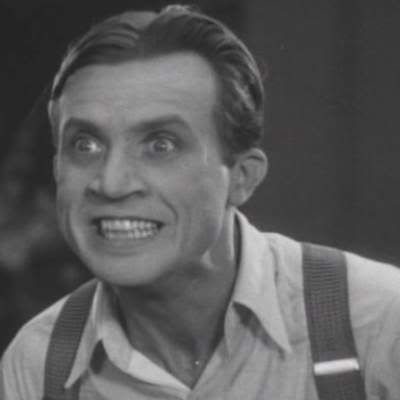 "Though he’s not likely to be the first (or second, or third...) name to come to mind when you think of classic horror stars, Dwight Frye created some of the most memorable characters ever to grace the genre, and possessed a maniacal energy that very few actors could possibly match. Frye was at his best playing mentally disturbed characters – his most famous role being that of Renfield in the 1931 version of Dracula. Despite the plethora of brilliant performances in that film, Frye steals the show in every single scene that he’s in. The laugh, the eyes, the spectacular vocal control, his body language...all of this came together to create a terrifying, yet pitiful madman among the best every seen on film. Later that same year, Frye gave the other performance for which he is most remembered: Fritz, in James Whale’s classic Frankenstein. This performance has more than stood the test of time – it’s hard to find a mad-scientists assistant that hasn’t been influenced by Frye’s Fritz in some way. As I’m sure many of you know, I am an actor myself and, like most actors, I have certain rituals that I like to go through before a performance. I like to have some quiet, alone time. I like to have a nice, cold can of coke. But above all else, I always try to re-watch Frye’s scenes as Renfield on the day of a show. His energy, mania, and sheer presence are both incredibly inspiring and a great way to get pumped up, no matter what kind of part I might be playing. Though the extent of his legacy these days seems to be through spoof of his Frankenstein character and an Alice Cooper song dedicated to him (The Ballad of Dwight Fry, without the “E”), he lives on in the heart of horror fans around the globe and his impact on the genre is indelible." - The_Return ED WOOD 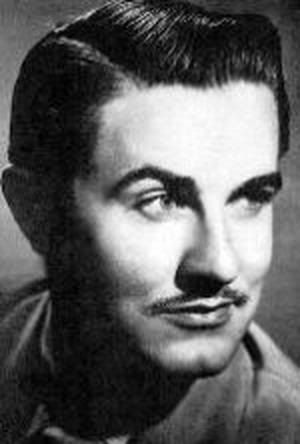 "Writer, director, actor, producer...crossdresser? Ed Wood is doubtlessly one of the most colourful and inspirational men to ever call himself a filmmaker – even though he was rather lacking in talent, he more than made up for it with determination. Eddie’s life was always interesting – when he was born, his mother was disappointed. She wanted a girl, not a little boy. She didn’t let that phase her however; she dressed the poor little guy in girl’s clothes all through his childhood, which turned into a lifelong habit. According to legend, during his service in World War II he was more terrified of getting wounded than of getting killed – because if he was shot dead, he wouldn’t have to explain to the medic why he was wearing ladies underwear underneath his uniform. Though he made movies in his backyard all through his childhood, his first major film was the semi-autobiographical “Glen or Glenda”, in which he starred alongside his good friend Bela Lugosi. Lugosi went on to star in many of Ed’s movies. In fact, Ed actually wrote parts into his scripts specifically to feature the once famous actor, as a favour to his ailing, drug-addicted friend. Ed’s films were universally panned by critics and audiences alike – his “masterpiece”, Plan 9 from Outer Space, appears on pretty much every list you’ll ever see of the “Worst Movies Ever Made”. He didn’t let this get him down though – despite being dead broke and battling alcoholism late in his life, Ed kept writing right up to his death in 1978. In a sad and ironic twist of fate, his movies began to receive a cult following not long after he passed away...poor Eddie would never see all the love and admiration that he was to receive. In 1994, Tim Burton made a film about Ed’s life, starring Johnny Depp as Eddie and Martin Landau as Bela Lugosi (for which he won an Oscar for Best Supporting Actor). Depp gives the performance of his career as Eddie, and portrays him as the great man that he was – upbeat, optimistic, determined and loyal to the very end. Here’s to you, Eddie – may you find success and admiration in the next life." - The Return EDGAR ALLAN POE 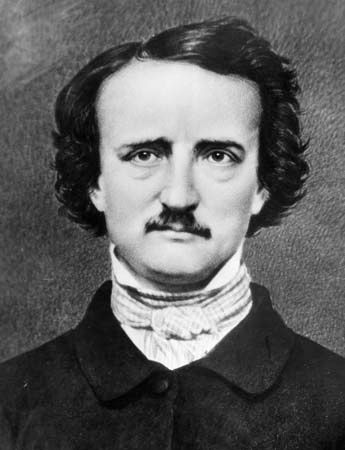 ELSA LANCHESTER  F. W. MURNAU 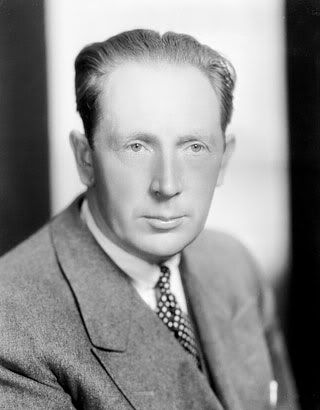 "After World War I, Germany's film industry was booming, but because of the hard economic times the country was facing, filmmakers found it hard to compete with the extravagant films coming from Hollywood. So, the German filmmakers developed their own style, rich with symbolism and a dark visual style (which was further accented by painting the shadows), and German Expressionism was born in 1920. F.W. (Friedrich Wilhelm) Murnau (b. 1888) was one of the most influential directors in this movement. After being a pilot in WWI, Murnau went onto director his first silent feature in 1919, The Boy in Blue. It was his 10th feature that would put him into history as a horror icon in 1922 with Nosferatu: A Symphony of Horror. Originally, an adaptation of Bram Stroker's Dracula, they failed to obtain the rights and ended up changing a few names and details, with Dracula's name being changed to Count Orlok. This film established one of the two vampire depictions (the other with Browning's Dracula in 1931), with Orlok's appearance akin to a corpse with rodent features and is neither charming nor erotic. Nosferatu also established the legend that vampires are physically harmed by sunlight as Orlok is killed by the sun in the end. Murnau went onto make other silent films in Germany, the notable Faust being his last in 1926. He then immigrated to America and made Sunrise in 1927. While not a financial success, Sunrise did win several Oscars at the first Academy Awards in 1929. Murnau then went on to talkies, getting limited success and cited silent films as being his preferred medium. Murnau died in 1931, but his legacy lives to this day. In 2000, the film Shadow of the Vampire debuted and tells a fictionalized account about the making of Nosferatu. It was hugely popular, which shows that Murnau is still as much a horror icon today as he was in his day." - Papillon Noir
__________________
"If you gaze for long into an abyss, the abyss gazes also into you." - Friedrich Nietzsche Last edited by _____V_____; 10-07-2008 at 12:46 AM. |
|
#8
|
||||
|
||||
|
FORREST J. ACKERMAN
 "Imagine yourself in another time. It's the late 50s-early 60s. There is no internet. There are no DVDs, no VHS or Betamax tapes. You happen to catch a late Saturday night showing of The Son of Frankenstein on the local TV station's equivalent of Creature Feature. Or perhaps you go with your family to see Whatver Happened to Baby Jane at the drive-in. You're instantly HOOKED. You LOVE horror movies. The time in between is spent avidly searching newspapers and tv guides for opportunities to see something, ANYTHING that might feed your need to be scared. You wonder if you might be a little bit odd for your desire to partake of these dark thrills... Then, one day, at the local drug store you see a magazine with a garish painting of Vincent Price on the cover, and the huge word MONSTERS at the top. You grab it and stare feverishly at the picture. You've just seen your first issue of Famous Monsters of Filmland, edited by Forrest J Ackerman. 35 cents... for that price you could buy three comic books... But that cover! You buy it- because you HAVE to, You take it home and sequestered in your bedroom you pour through the pages. You read about some guy who was in monster movies forty years ago, before movies even had SOUND. There are articles about your favorites, Boris & Bela. There are pictures of those new Dracula & Frankenstein movies coming over from England. There's a roundup of UPCOMING movies that makes your heart pound. And there are LETTERS. LETTERS! There are actually other people, LIKE YOU, all across the country, THAT LOVE HORROR MOVIES TOO! Holy mother- this is an unexpected revelation that opens your eyes. You're not weird for liking horror movies- in fact, you're part of a community! From that day on you buy every issue of Famous Monsters. You even write to a few names in the penpals column and make friends with other horror fans far away. This was the influence Famous Monsters of Filmland editor Forrest J Ackerman, the "Ackermonster," had. He educated us. In a time before information was available to everyone instantly he taught us the history of horror filmmaking, from the silent days to the modern era. He informed us. FM was THE place to go for news of upcoming horror movies of all types. He didn't just tell you about the major studio offerings- low budget and no-budget films got equal billing in FM. He even told us about foreign films! He kept us connected. Through the letters to the editor and penpal columns we learned what others thought. Young readers who had letters printed included John Carpenter, George Lucas, John Landis, and Joe Dante. And then there were the advertisements! Through his magazine you could order what was then the ONLY way to watch horror films at your leisure in your home- on 8mm film. You could also buy records of old radio shows, back issues of his magazines, life size standups of classic monsters, monster masks, and the greatest thing ever- Dick Smith's Do It Yourself Monster Make-Up Book. FJA was, to put it simply, a visionary. He maintained the largest collection of horror and sci-fi memorabilia in the world and if you knocked on his door in "Hollyweird" he would give you a personalized guided tour through it. His influence can't be overestimated. He CREATED horror fandom. He inspired a who's who of horror writers, actors, directors and technicians. FM directly inspired other publications like Castle of Frankenstein, Fangoria, Rue Morgue and others. Without Forry it's quite possible the horror industry simply wouldn't exist as we know it today." - NeverEnding FRANZ KAFKA 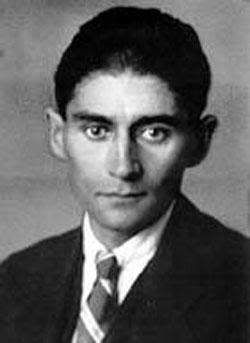 "Horror is often used to awaken us to the dysfunctions in our society. With books like the Stepford Wives and Rosemary's Baby, author Ira Levin revealed that both urban and suburban America are infected, that nobody is safe and that conformity reigns triumphant. These bureaucratic nightmares reinvigorated the horror genre on the shelves during the sixties and seventies and with the help of Roman Polanski, changed it on the screen. But, before Levin's tales of Satanic brownstone cults and cybernetic housewives, Franz Kafka reinvented paranoia and used surrealism and dread to alert readers of the perils of modern life. Gregor Samsa of Kafka's the Metamorphosis, like Levin's Stepford Wives was conformed and dehumanized, turned into a cockroach instead of a human being. Like Peter Lorre in Fritz Lang's M, Joseph K of the Trial flees persecution, though K's persecution is all the more gutwrenching because his crime is never revealed. Though looked upon by many as an author of literary fiction, Kafka changed horror by daring to reveal things about the world that other writers only dared to hint at. His gospels of alienation and terror are still topical and inspiring to this day, his work paving the way for Cronenberg' s tales of dwindling humanity, Polanski's urban horror and Lynch's hallucinatory odysseys. Kafka once wrote "a book should serve as the ax for the frozen sea within us" and with his breed of horror, Kafka's work does just that." - Doc Faustus FRITZ LANG 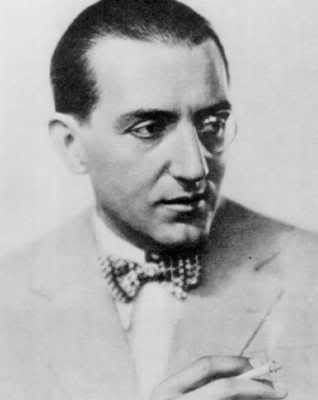 GEORGE A. ROMERO 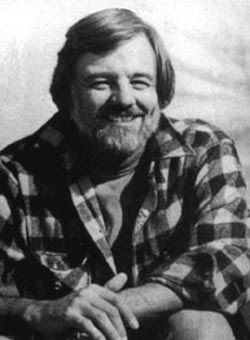 GOBLIN 
__________________
"If you gaze for long into an abyss, the abyss gazes also into you." - Friedrich Nietzsche Last edited by _____V_____; 09-22-2008 at 09:29 PM. |
|
#9
|
||||
|
||||
|
GUNNAR HANSEN
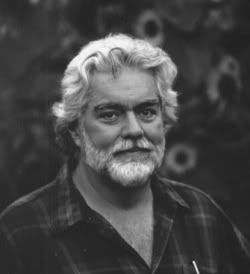 H. P. LOVECRAFT  HERK HARVEY 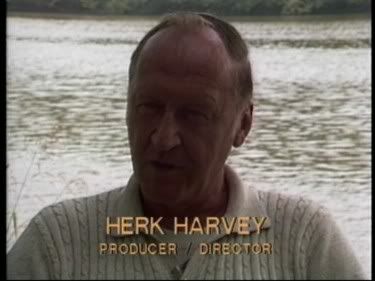 HERSCHELL GORDON LEWIS 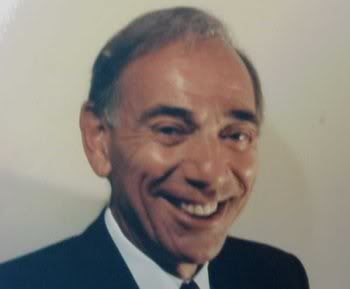 "While he didn’t exactly invent “Grindhouse”, it can truly be said that he perfected it. For those too young , Grindhouse was more an experience, than a movie. Sitting in those darkened theatres, shoes planted in a mysterious goo, eyeing the other patrons - the unconscious wino, the peculiar man with a satchel, the boisterous couple in the back row, the viewer sometimes, literally took one’s own life into one’s hands. All for the sake of viewing some of the rankest, most luridly titled cinema ever made - 2000 Maniacs, Blood Feast, The Wizard of Gore, The Gore Gore Girls, Just for the Hell of It, She Devils on Wheels, Color Me Blood Red, Moonshine Mountain, Monster A Go-Go, Something Weird, Blast-Off Girls, Gruesome Twosome, Scum of the Earth and This Stuff’ll Kill Ya. Why were they the best of the bad? Why were they so watchable? For the same reasons that a train wreck is watchable. They were of such banal epic proportions, that you really wanted to see the next one, to see if Lewis could top himself. If Ed Wood was D. W. Griffith, most undoubtedly Lewis was Cecil B. DeMille in this genre. His creative ways to meet a budget were on a par with Wood, also. His casts were usually local rural townspeople with aspirations of stardom, mixed copiously with Playboy bunnies, strippers or any other female available who would work cheap. When told how much session musicians charged, he simply wrote and played the music himself. And he wasn’t afraid to make the occasional deal with the devil (or fast food magnate), getting Col. Harland Sanders (of Kentucky Fried Chicken fame) to make an appearance for name value (and probably free food for the cast). He is now one of the biggest names in the mail order business, a spry entrepreneur who hasn’t forsaken cinema. He even has assembled a collection of those jingles he wrote for his films. Considering his age, he seems to have lost none of his drive, and in most interviews I’ve read, he still sounds enthusiastic. And there are always rumors of a return to the director’s chair. But it just wont be the same in a suburban multi-plex, as it was with H G Lewis in the blood-soaked 70s and 80s, in little cheap theaters and big malls everywhere." - Festered HIERONYMUS BOSCH 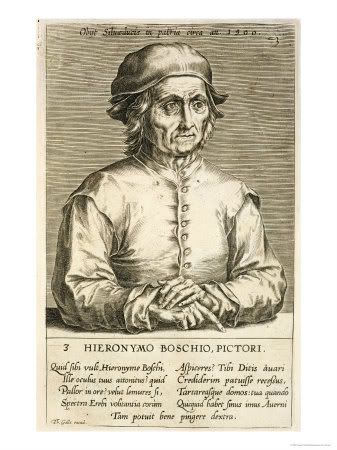
__________________
"If you gaze for long into an abyss, the abyss gazes also into you." - Friedrich Nietzsche Last edited by _____V_____; 10-19-2008 at 09:33 PM. |
|
#10
|
||||
|
||||
|
INGRID PITT
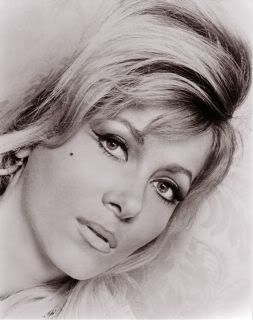 ISHIRÔ HONDA 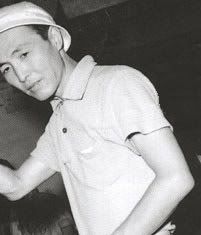 "Ishiro Honda took the assignment to make a Japanese giant monster movie and did two things with it that nobody could have imagined. The first was to start a trend and genre in Japanese film that continues to this day, the second was to create a great piece of art. Honda's great eye, somber black and white and social conscience infused by both being the son of a Buddhist priest and a veteran made Gojira both unnerving and breathtaking. Unlike previous giant monster films, Honda focused on the devastation and the personal consequences of a monster attack in addition to the moral lapses that created it. He made a man in a rubber suit feel like a real threat. Though the horror content of the sequels was not as great, with all of them that he directed, Honda did something else that would be relevant to fan history: he turned Godzilla into a monster you could trust your six year old with, a reluctant protector looking out for the consequences of oppression and environmental destruction. Godzilla continues to turn many kids into monster kids who grow up to be impassioned fans and contributors to the genre. We can thank Ishiro Honda for this." - Doc Faustus JACQUES TOURNEUR 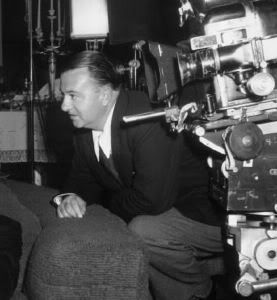 JAMES WHALE 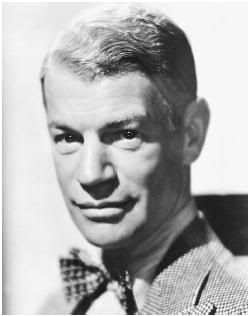 JAMIE LEE CURTIS 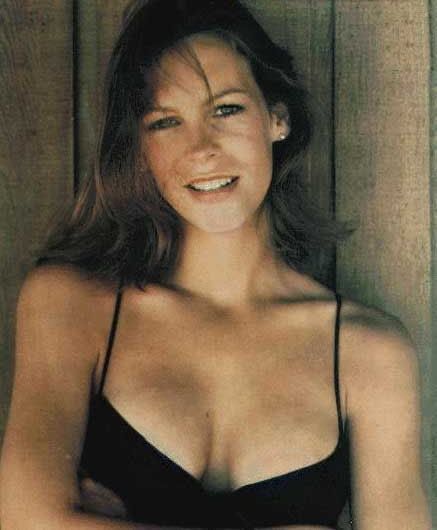
__________________
"If you gaze for long into an abyss, the abyss gazes also into you." - Friedrich Nietzsche Last edited by _____V_____; 09-28-2008 at 08:56 AM. |
 |
|
|